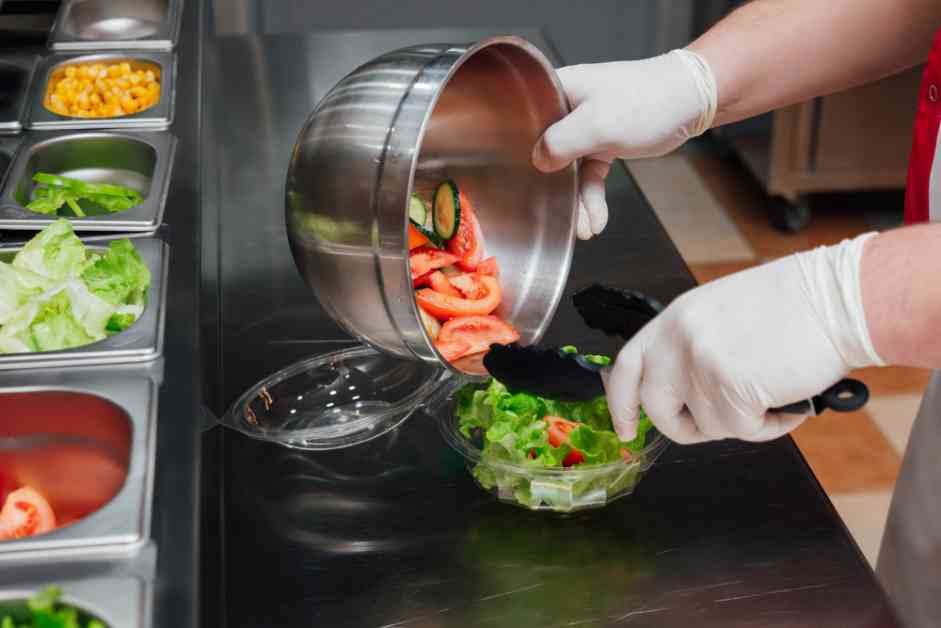The Syndicat national de l’Alimentation et de la Restauration Rapide (SNARR) recently unveiled the latest version of its Guide de Bonnes Pratiques d’Hygiène (GBPH) de la Restauration Rapide. This guide aims to assist industry professionals in meeting regulatory obligations regarding hygiene and food safety, as well as implementing measures to ensure the safety and cleanliness of the products provided to customers.
The updated guide includes regulatory reminders, concise tables outlining health risks and their impacts, as well as strategies to minimize these risks. Additionally, practical advice for preventing health risks is provided to help fast food establishments maintain high standards of hygiene and safety.
Recognized by the Ministry of Agriculture, the guide aims to establish a common documentary base to facilitate communication between restaurant owners and regulatory inspectors. By providing a comprehensive resource for best hygiene practices in fast food restaurants, the guide serves as a valuable tool for ensuring compliance with industry standards and regulations.
Importance of Hygiene in Fast Food Restaurants
Maintaining proper hygiene in fast food restaurants is crucial for preventing foodborne illnesses and ensuring customer satisfaction. With the fast-paced nature of the industry, it is essential for employees to adhere to strict hygiene practices to uphold the reputation of the establishment and protect the health of patrons.
In a study conducted by the Centers for Disease Control and Prevention (CDC), it was found that poor hygiene practices in fast food restaurants were a leading cause of foodborne illnesses. By following guidelines outlined in the GBPH de la Restauration Rapide, restaurant owners can minimize the risk of contamination and maintain a safe environment for both customers and staff.
Key Recommendations from the Guide
The GBPH de la Restauration Rapide provides clear recommendations for fast food establishments to enhance their hygiene practices and ensure compliance with regulatory standards. Some key recommendations include:
1. Regular Handwashing: Employees should wash their hands thoroughly and frequently, especially after handling raw meat or using the restroom. Handwashing stations should be equipped with soap, water, and hand sanitizer for convenience.
2. Proper Food Storage: Foods should be stored at the correct temperature to prevent bacterial growth and spoilage. Refrigerators and freezers should be regularly cleaned and sanitized to maintain food safety.
3. Cleaning and Sanitizing Surfaces: Surfaces in the kitchen and dining areas should be cleaned and sanitized regularly to prevent cross-contamination. Using disinfectants approved for food contact surfaces can help reduce the spread of harmful bacteria.
4. Employee Training: All staff members should receive training on proper hygiene practices and food safety protocols. Regular training sessions can help reinforce the importance of hygiene and ensure compliance with regulations.
By implementing these recommendations and following the guidelines outlined in the GBPH de la Restauration Rapide, fast food restaurants can prioritize hygiene and safety to provide a positive dining experience for customers.
Benefits of Following Best Hygiene Practices
Adhering to best hygiene practices in fast food restaurants offers a range of benefits for both customers and businesses. By maintaining a clean and safe environment, restaurants can enhance their reputation, attract more customers, and build trust with the community.
Furthermore, prioritizing hygiene can lead to increased employee satisfaction and productivity. When staff members feel confident in their workplace’s cleanliness and safety, they are more likely to perform their duties effectively and contribute to the overall success of the establishment.
In addition, following best hygiene practices can help prevent foodborne illnesses and outbreaks, reducing the risk of legal liabilities and financial losses associated with such incidents. By investing in hygiene training and implementing proper protocols, fast food restaurants can safeguard their reputation and protect the well-being of their customers.
Overall, incorporating best hygiene practices into daily operations can lead to long-term success and sustainability for fast food restaurants, positioning them as responsible and reliable establishments in the competitive food service industry.
In conclusion, the Guide de Bonnes Pratiques d’Hygiène de la Restauration Rapide serves as a valuable resource for fast food restaurants looking to enhance their hygiene practices and ensure compliance with regulatory standards. By following the recommendations outlined in the guide and prioritizing hygiene and safety, restaurants can create a positive dining experience for customers and build a strong reputation in the industry.

